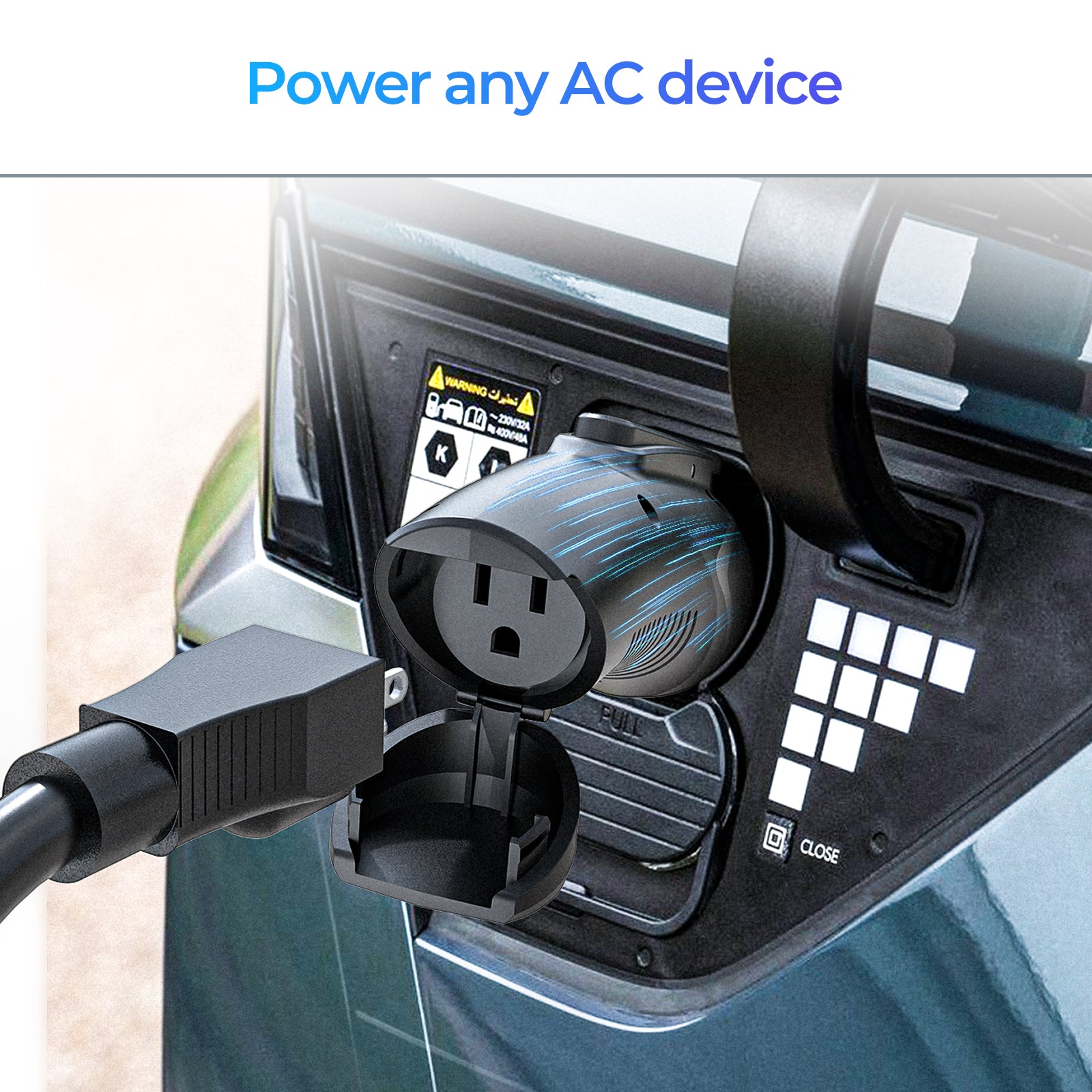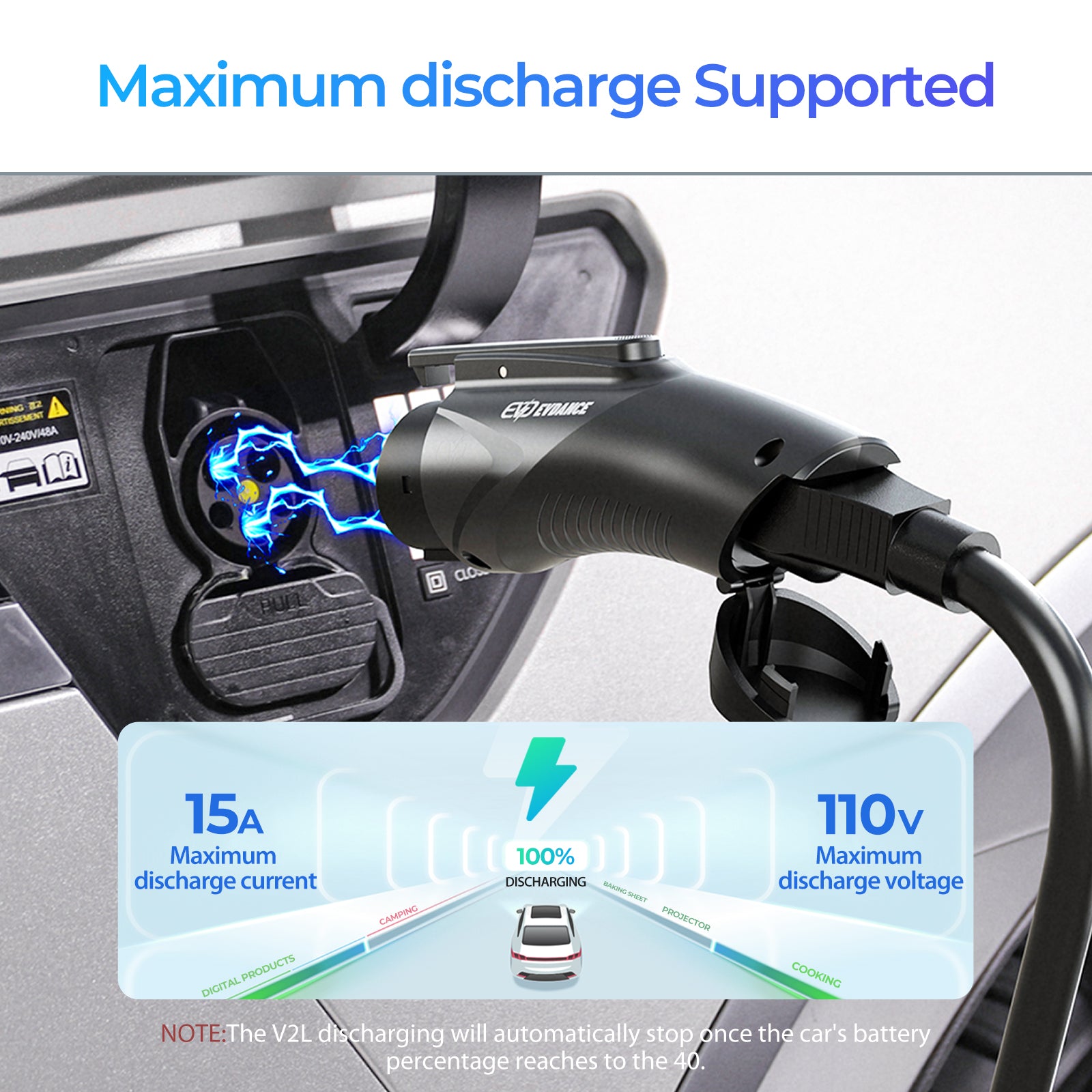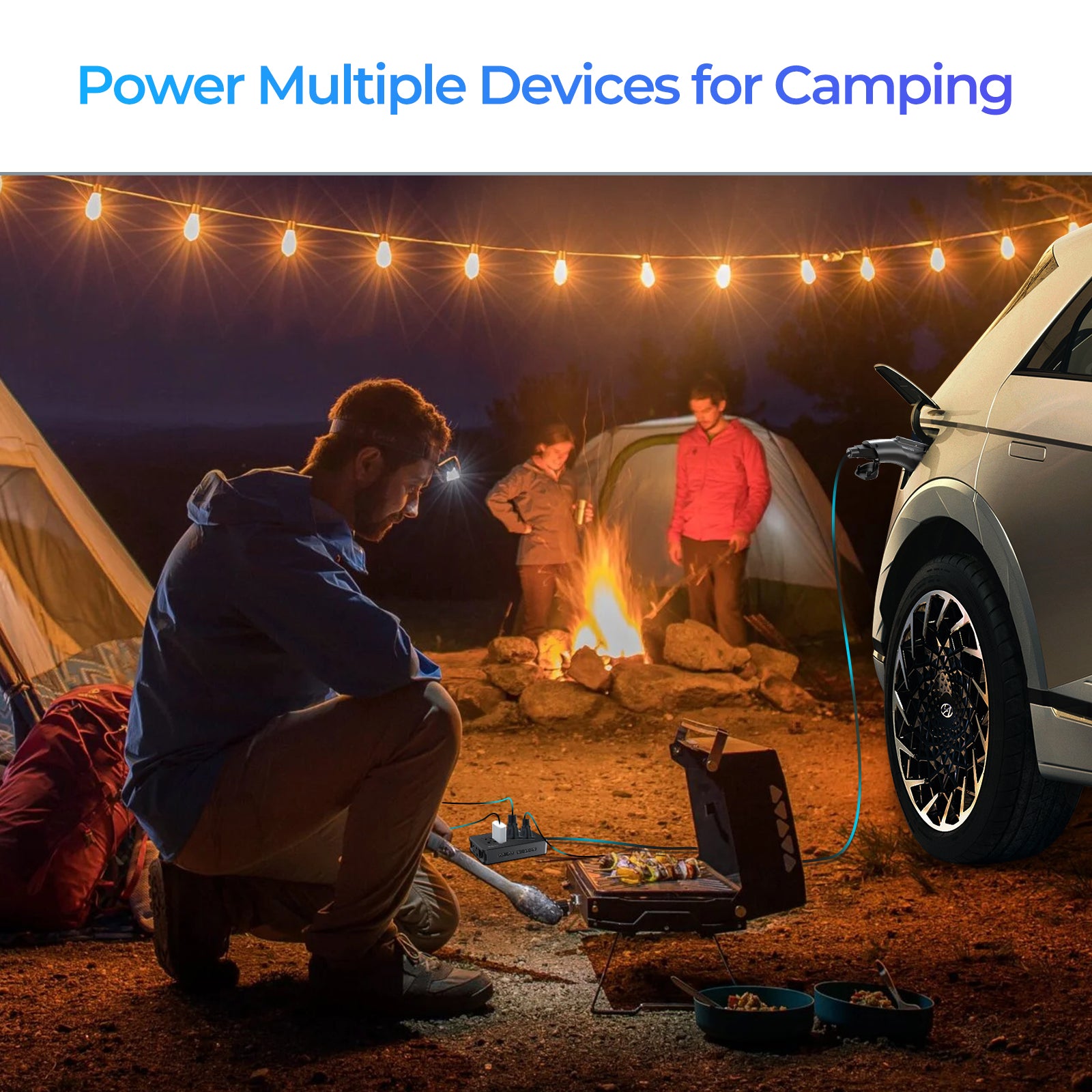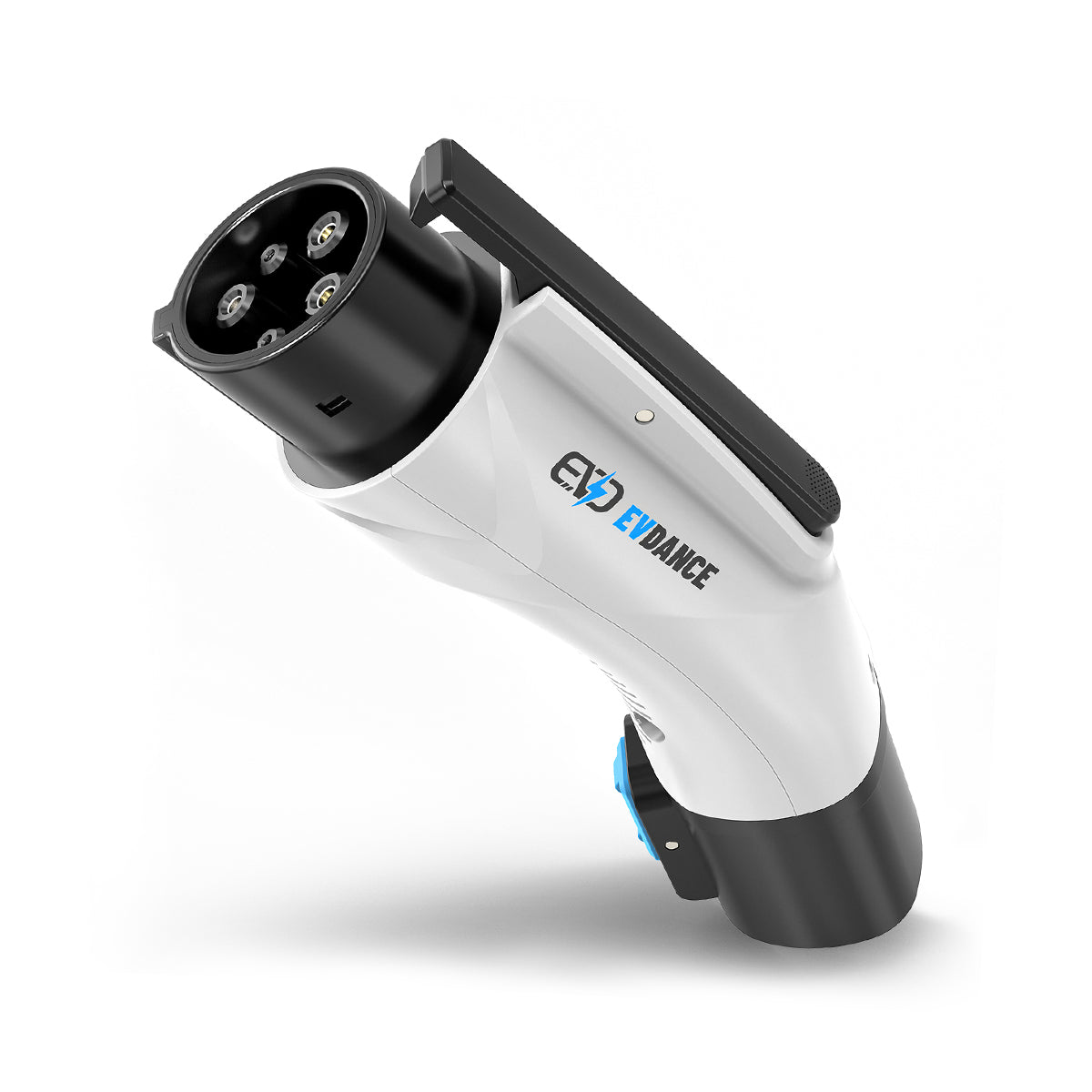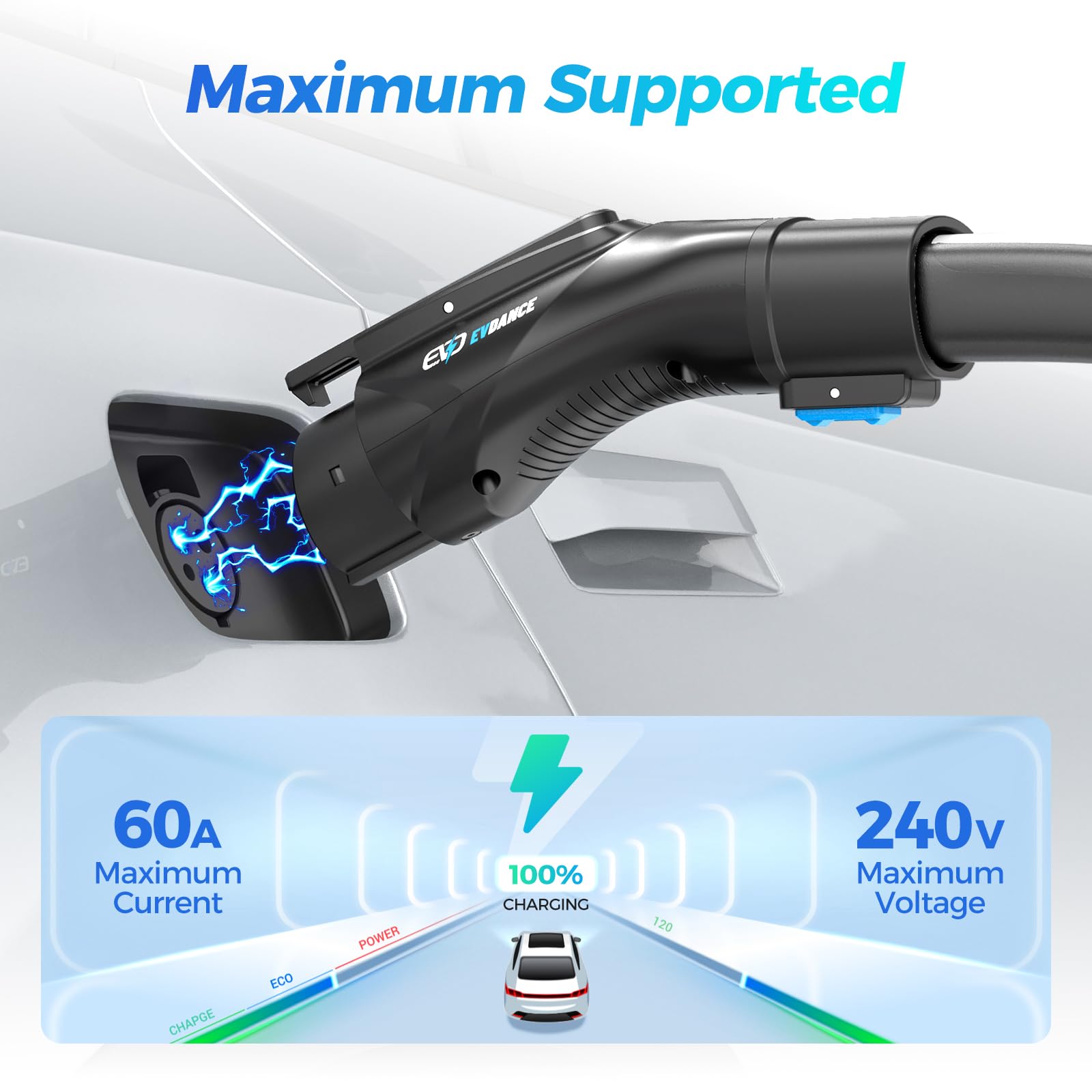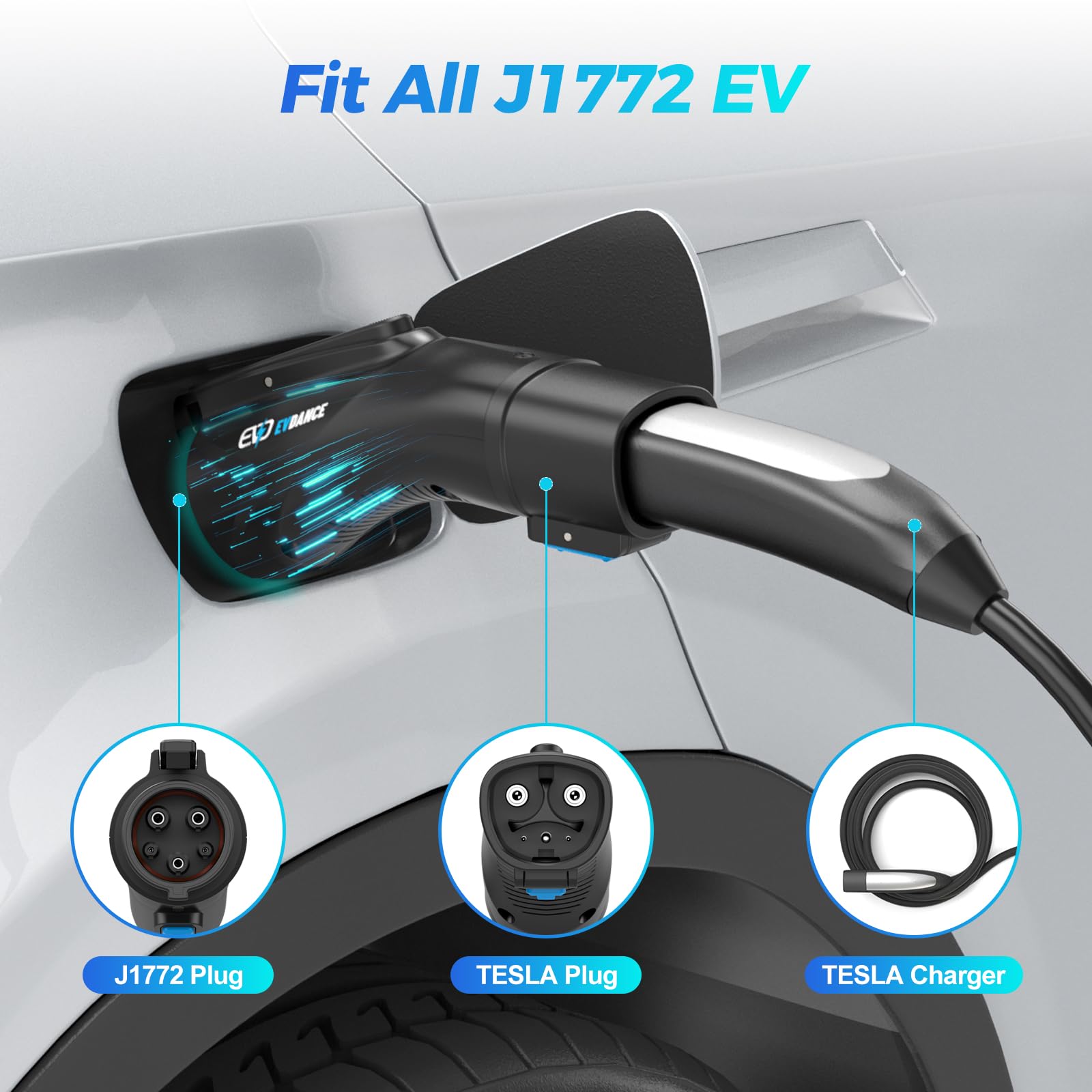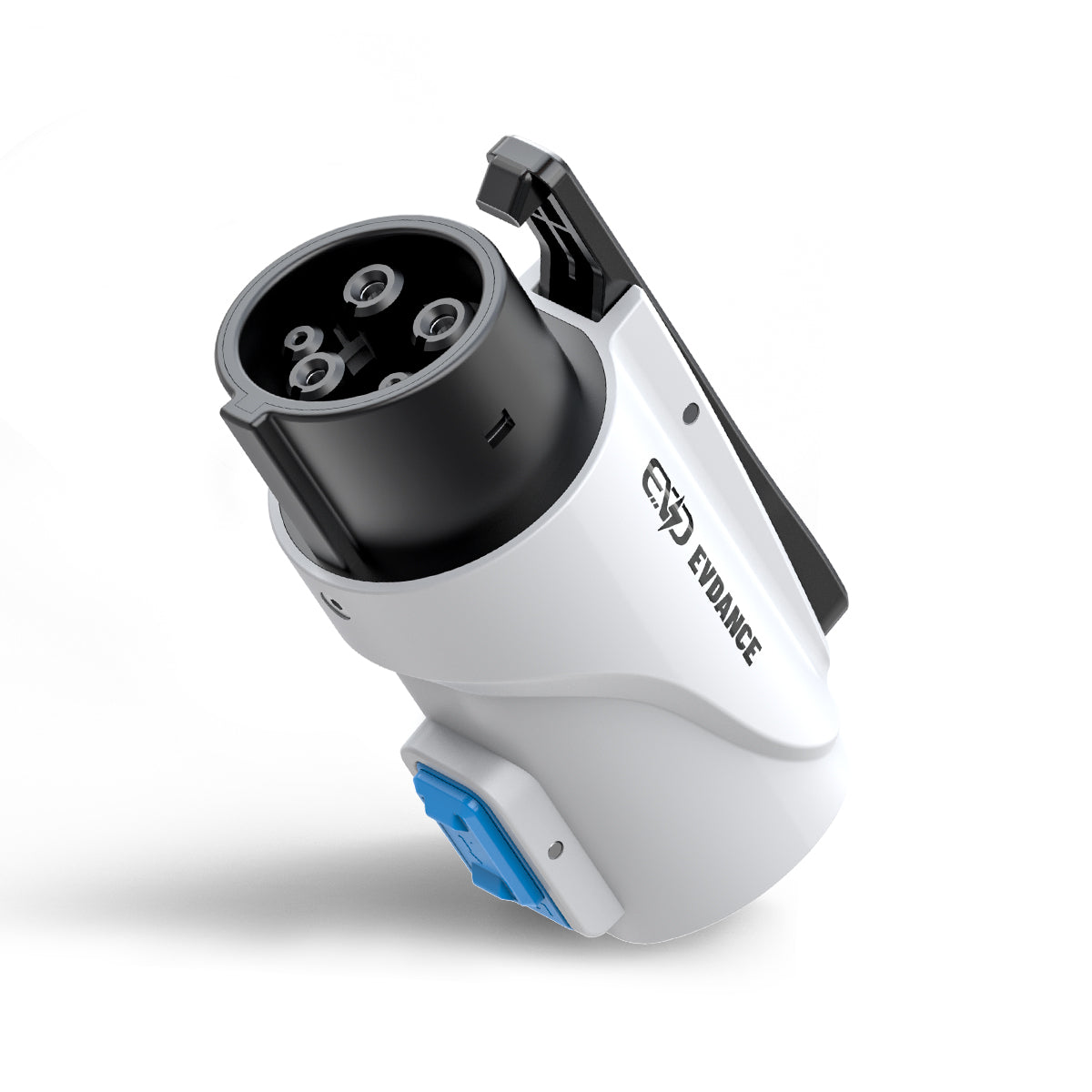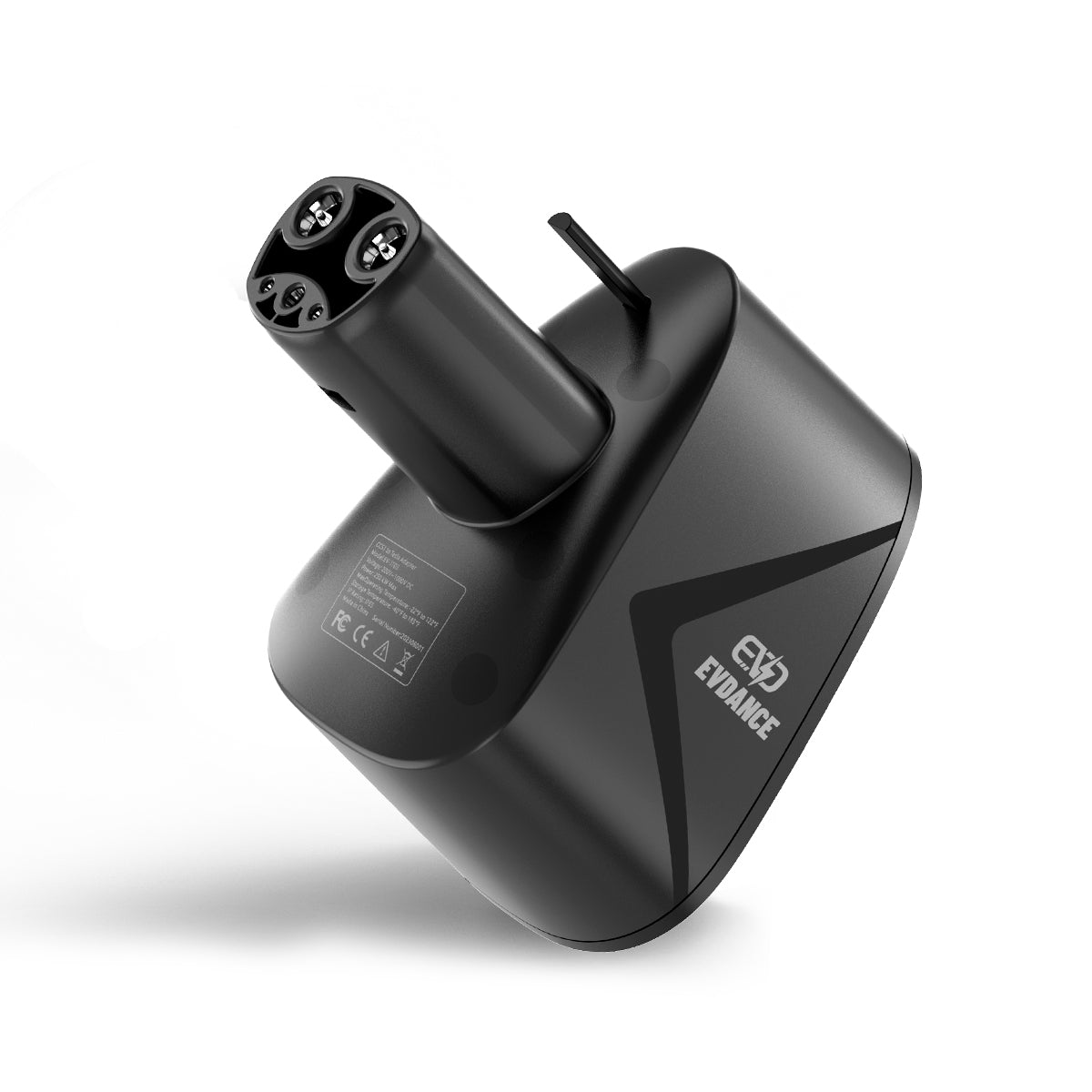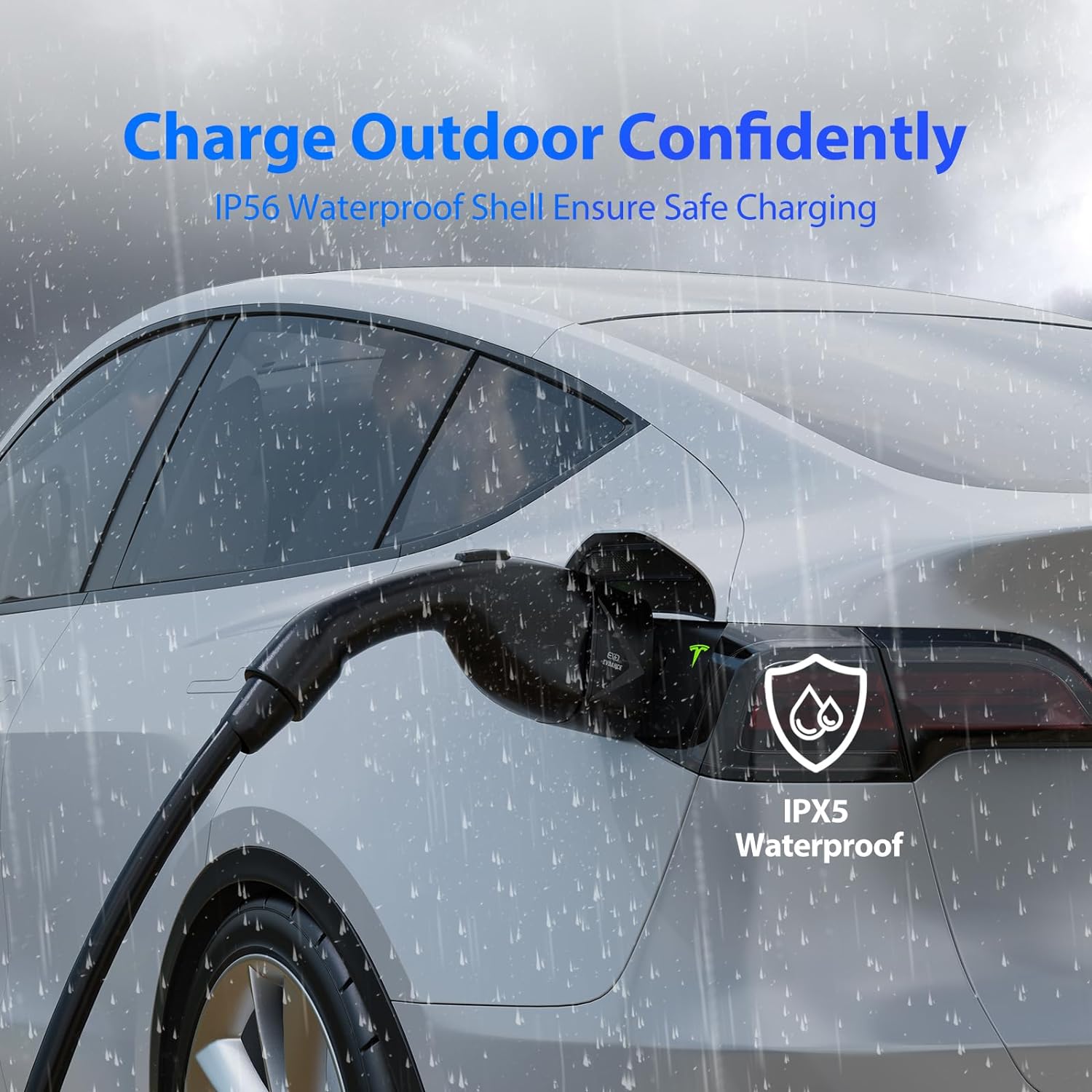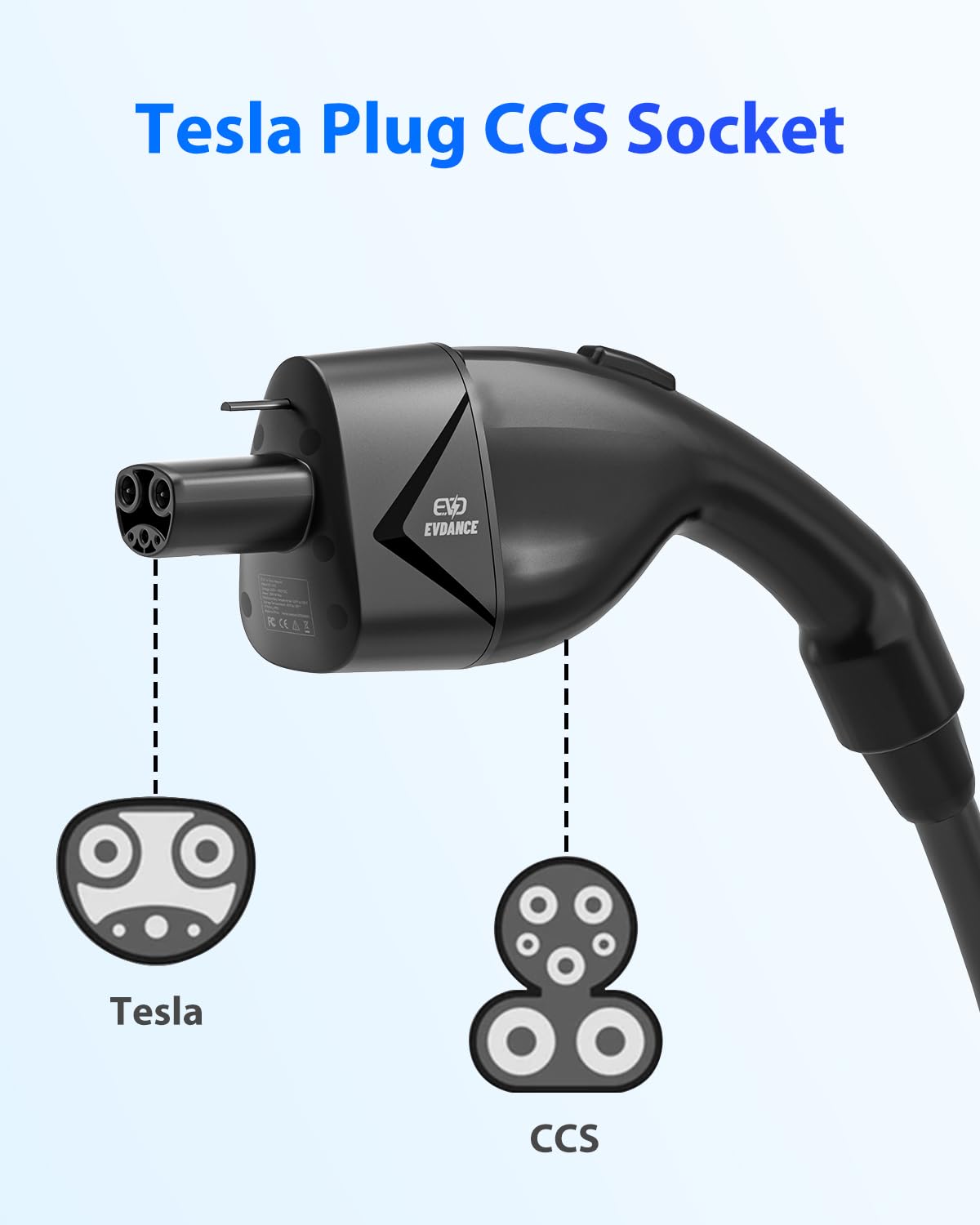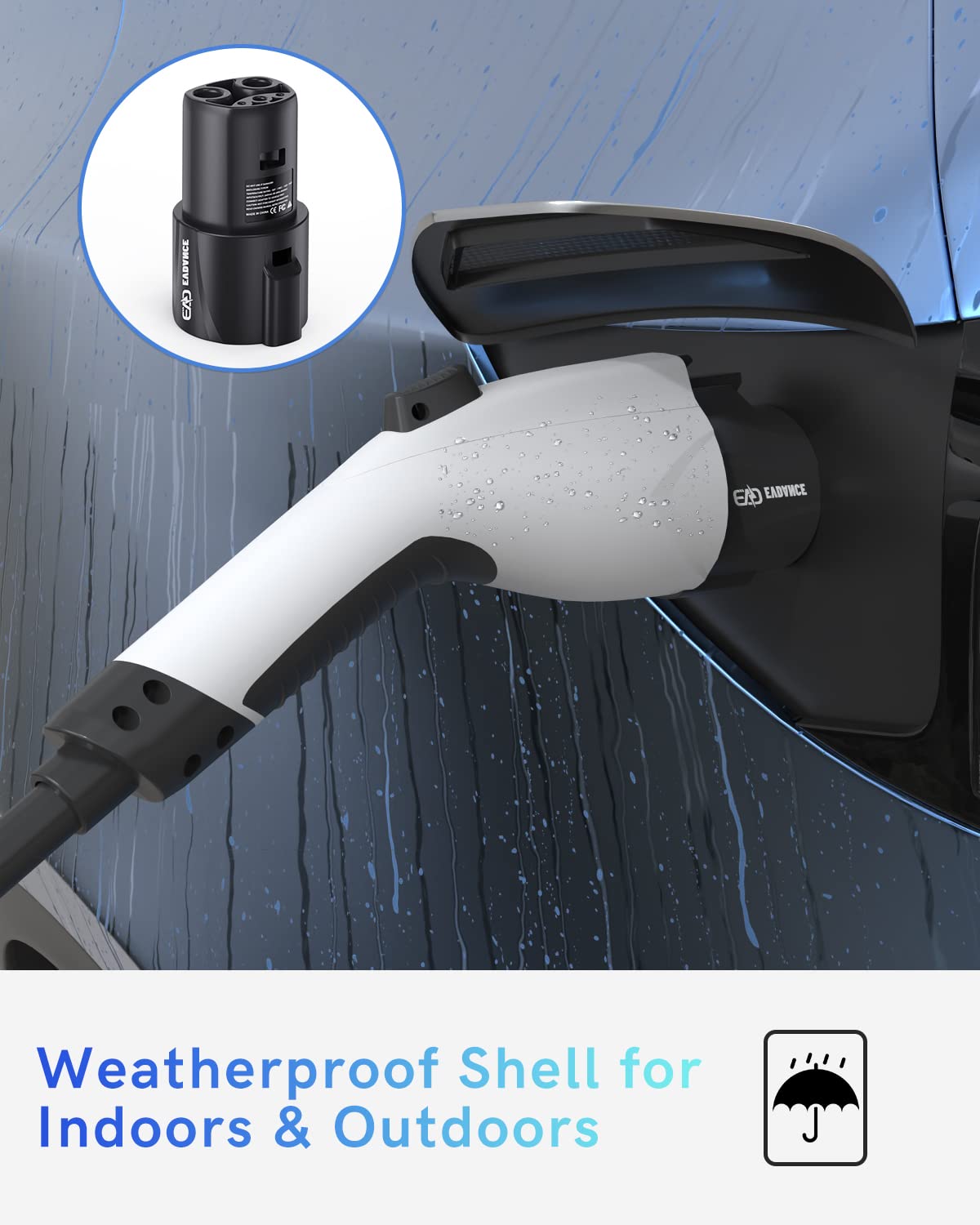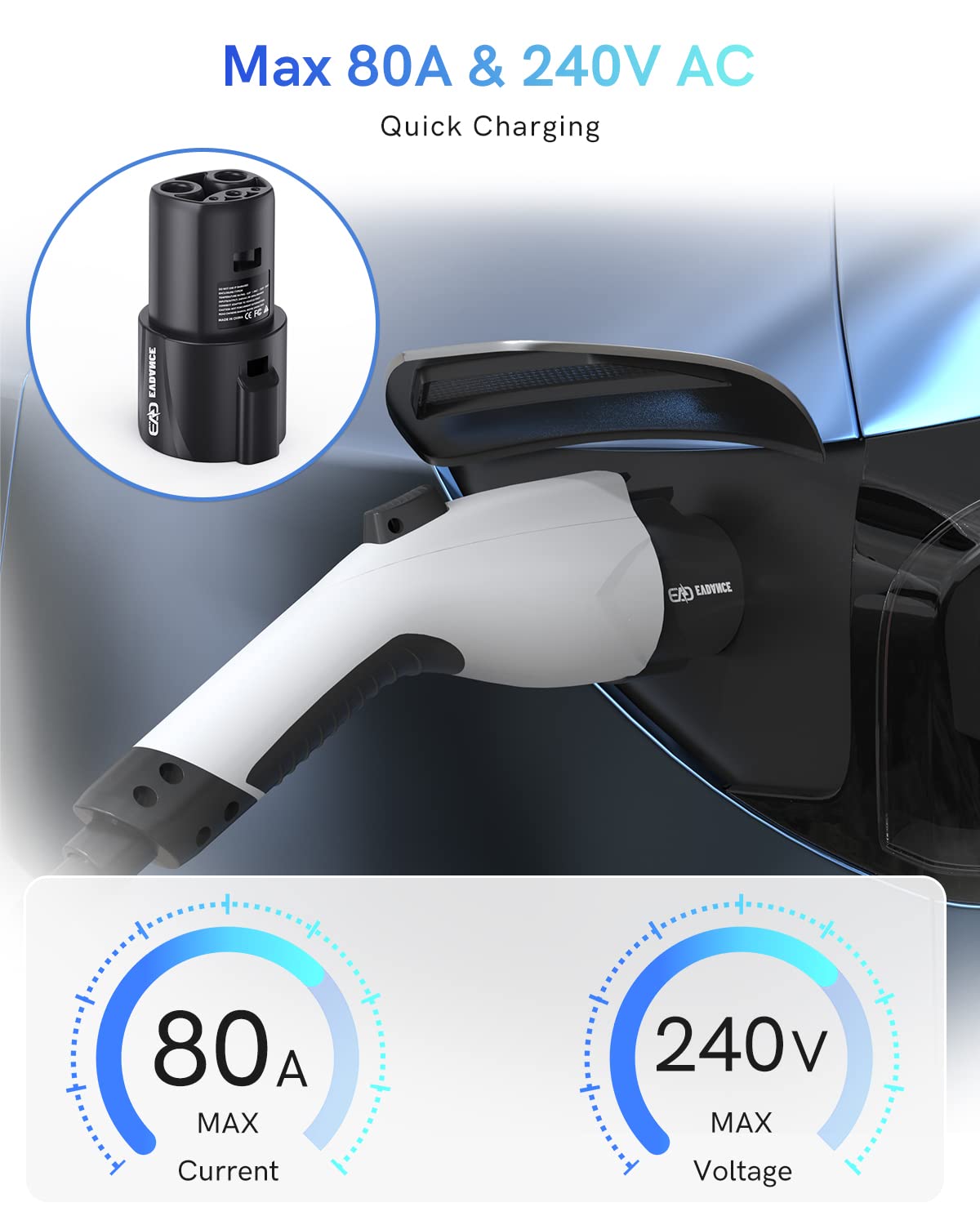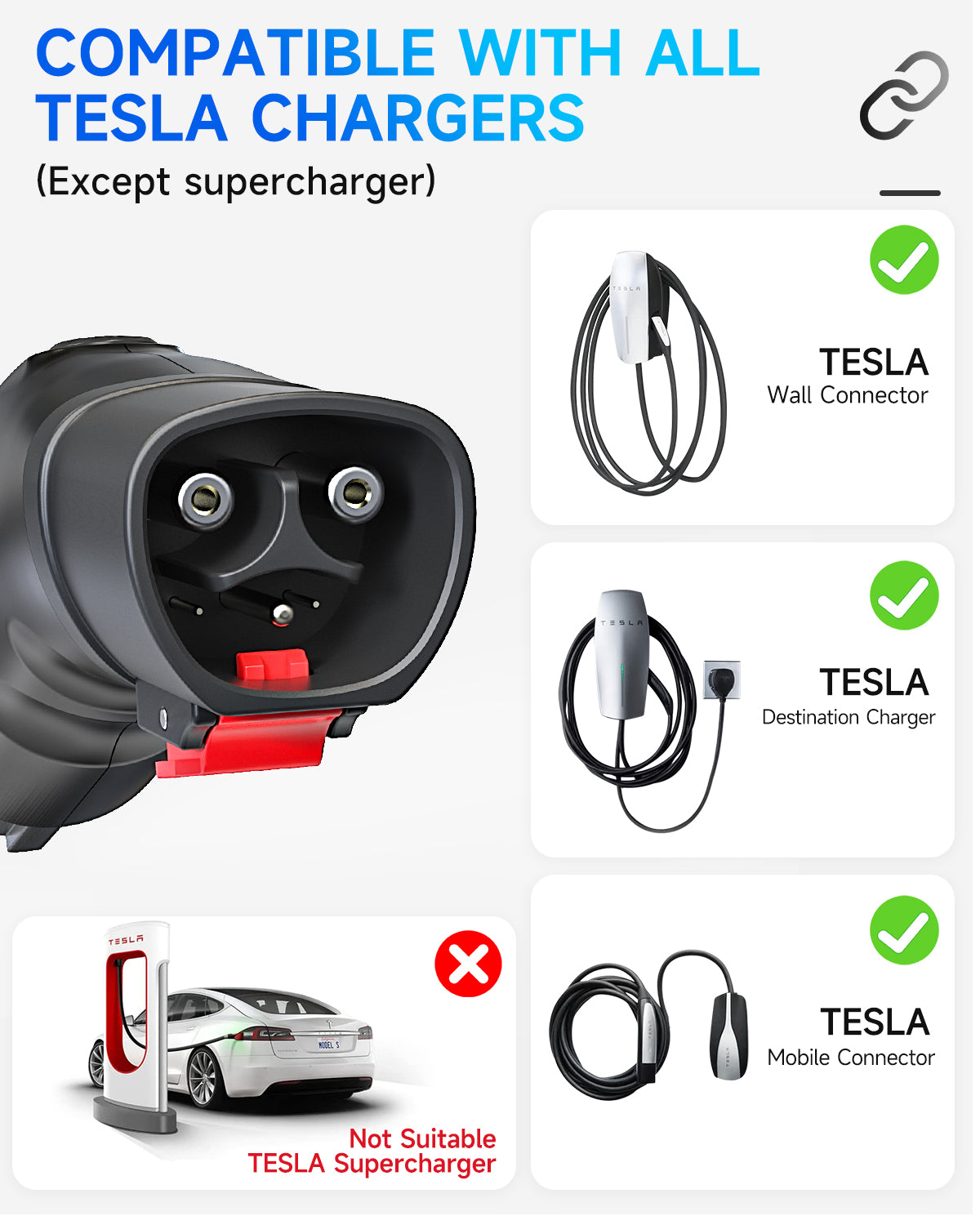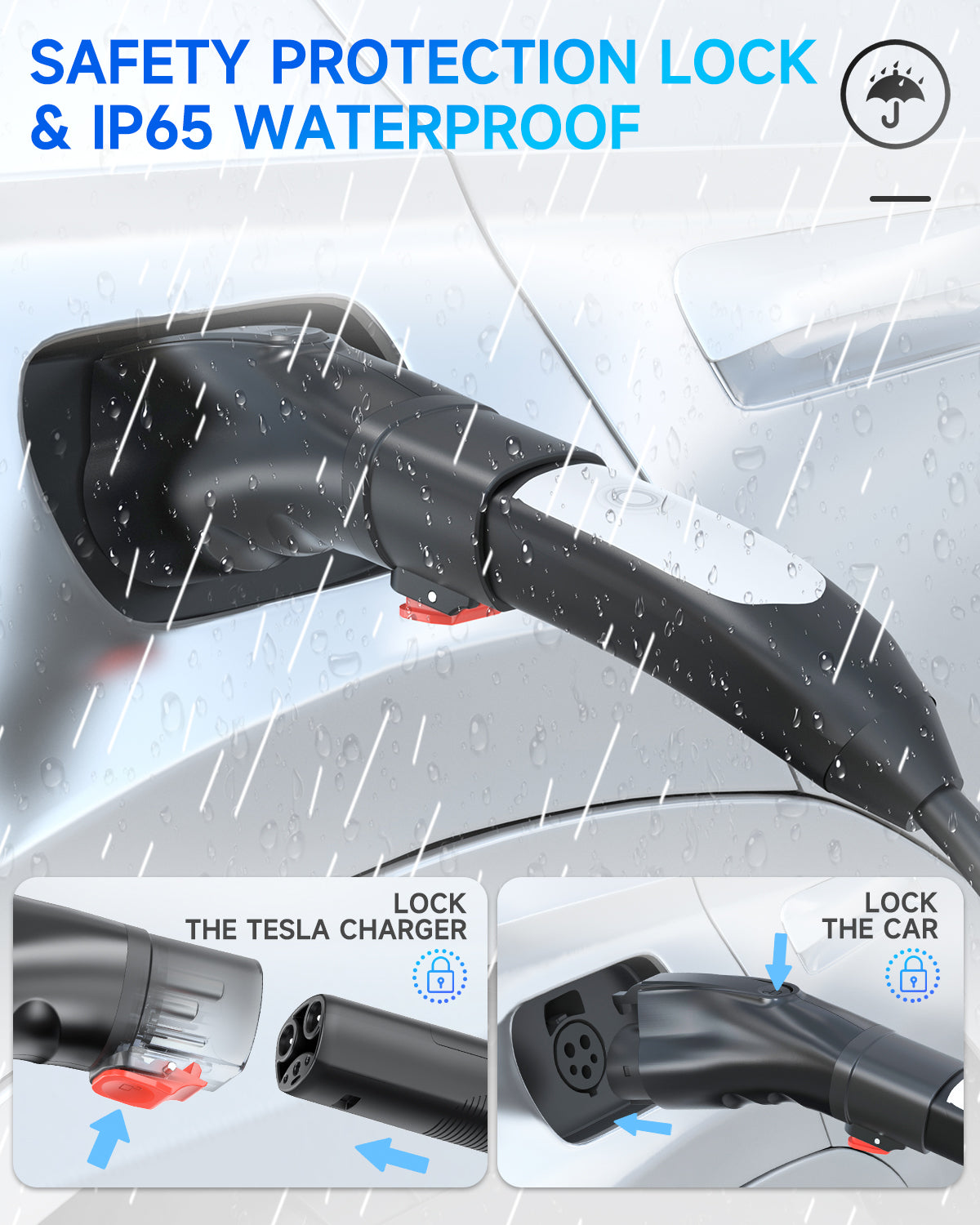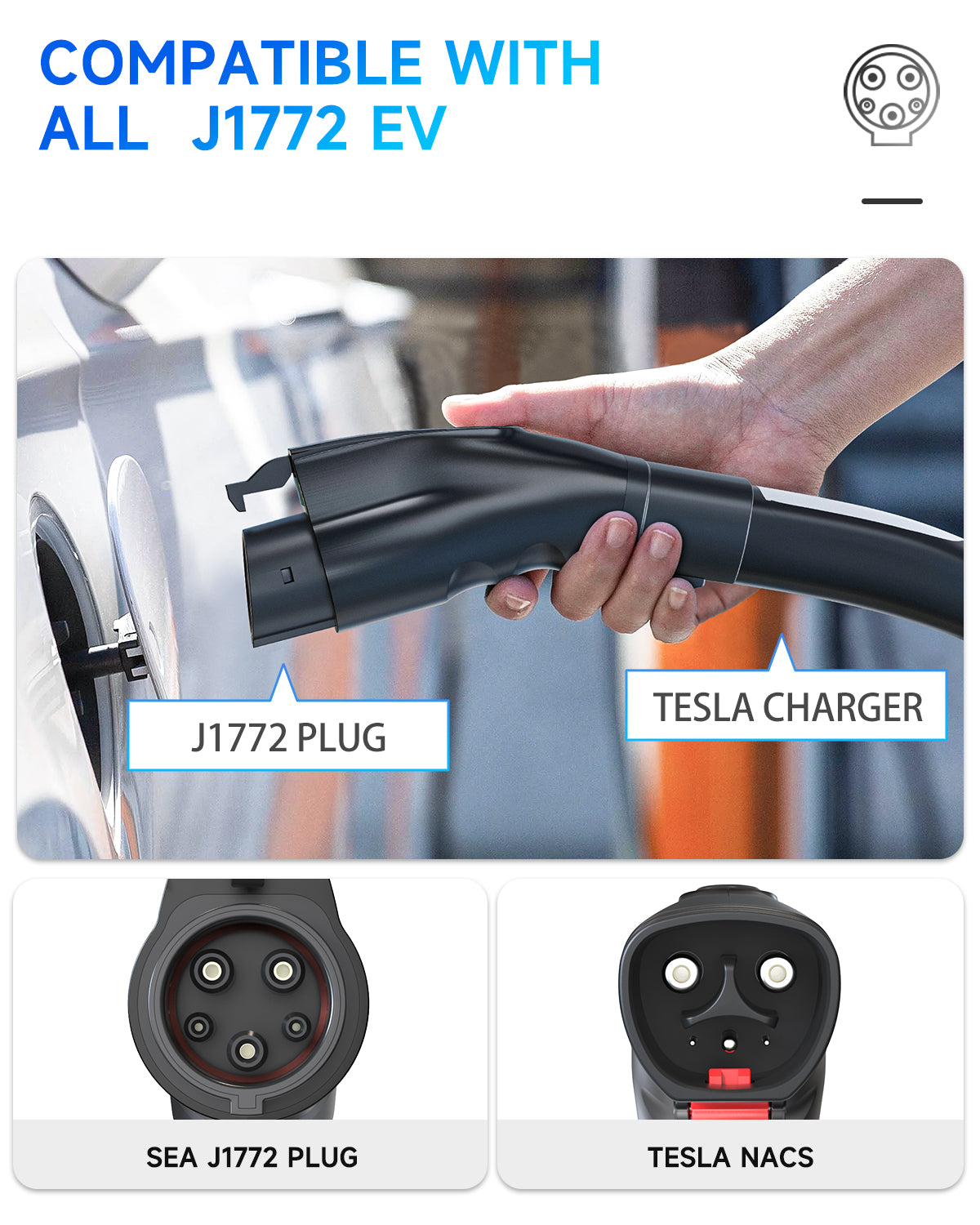FAQs
What is a NACS(Tesla) to SAE J1772 charging adapter, and how does it work?
The NACS to SAE J1772 charging adapter allows non-Tesla electric vehicles to use Tesla charging stations (destination chargers or wall connectors). You plug the Tesla connector into the adapter, and then connect the adapter to your vehicle’s J1772 port.
Which electric vehicles are compatible with the NACS(Tesla) to SAE J1772 charging adapter?
EVDANCE adapter is compatible with any electric vehicle that uses the standard SAE J1772 connector, including models from Chevrolet, Nissan, Ford, BMW, and many others. This allows these vehicles to charge at Tesla destination chargers.
Can I use the NACS(Tesla) to SAE J1772 adapter at Tesla Superchargers?
No, the NACS to SAE J1772 adapter is not compatible with Tesla Superchargers. It is designed for use with Tesla destination chargers and Tesla wall connectors, which are typically found at hotels, restaurants, and other public locations.
What charging speeds can I expect with the NACS(Tesla) to SAE J1772 adapter?
Charging speeds depend on the power output of the Tesla charger and your vehicle’s onboard charger capacity. Typically, EVDANCE NACS destination chargers can provide up to 22 kW of power, but your actual charging speed will be limited by your vehicle’s maximum charging capability.
Is the NACS(Tesla) to SAE J1772 adapter safe to use, and does it have any safety certifications?
Yes, EVDANCE high-quality NACS to SAE J1772 adapter is designed with safety features such as overcurrent protection, overvoltage protection, and thermal protection to prevent overheating and adapters with safety certifications such as CE to ensure they meet industry standards. Always follow the product instructions for safe and effective use.
Do all EV chargers have the same plug?
No. EV chargers do not all use the same plug. Different manufacturers use different connector standards. For example, most non-Tesla EVs in North America use the J1772 plug for Level 1 and Level 2 charging, while Tesla uses a proprietary plug (now referred to as NACS). This means a charger compatible with one type may not work with the other without an adapter.
Can I charge my EV from a standard household socket?
Yes, you can. Most EVs come with a Level 1 charging cable that plugs into a regular 120V household outlet. However, Level 1 charging is slow — typically adding only 3–5 miles of range per hour. For faster charging, a Level 2 charger connected to a 240V outlet is recommended, especially for daily use or longer-range vehicles.
What type of plug do EV chargers use?
The plug type depends on charging level and geographic region:
Level 1 & Level 2 (North America):
J1772 (non-Tesla EVs)
NACS (Tesla vehicles)
Level 1 & Level 2 (Europe):
Type 2 (Mennekes)
DC Fast Charging (North America):
Tesla Superchargers: NACS
Most other EVs: CCS Combo
Some older models (e.g., Nissan Leaf): CHAdeMO
Understanding your EV’s plug type and regional standards ensures compatibility and safer, more efficient charging.








